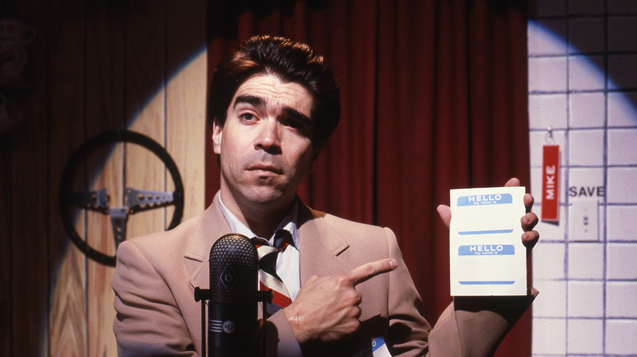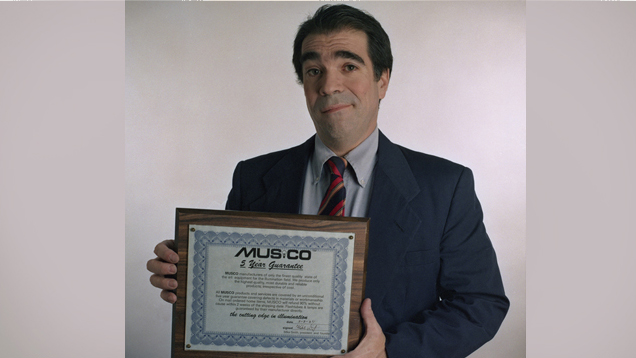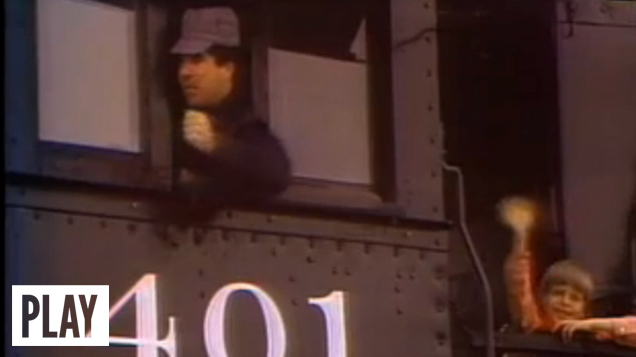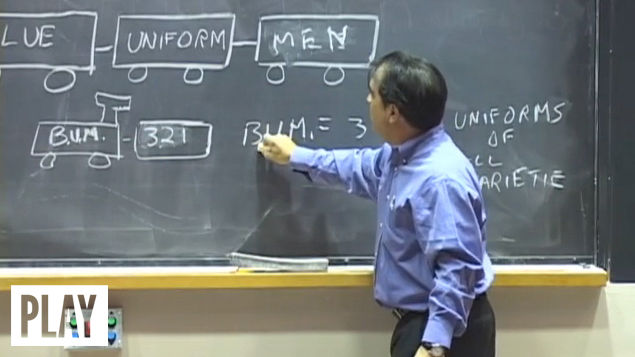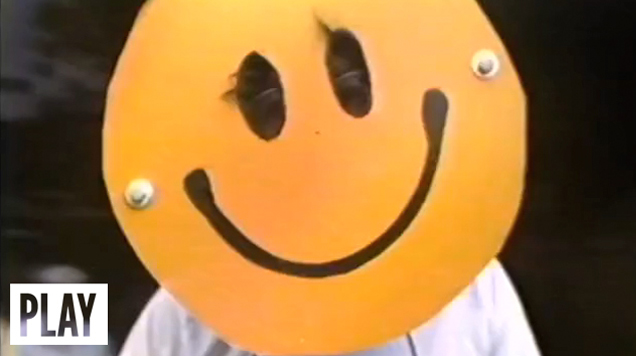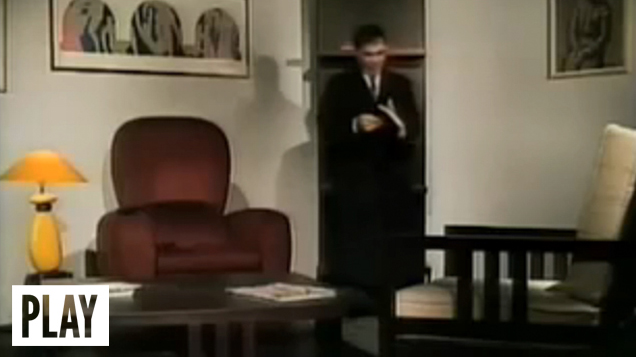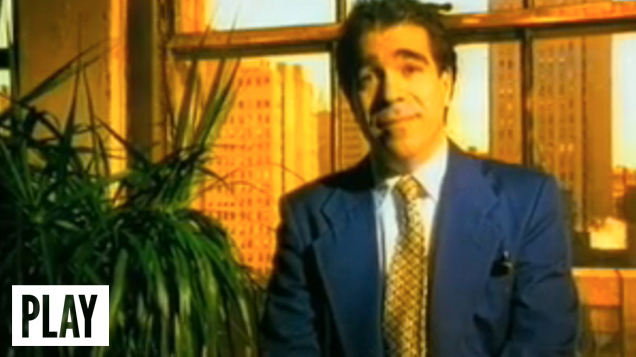IS
You are best known for two characters; let’s begin with Mike. Michael, who is Mike and how did he begin?
Since I was a child people have called me both Mike and Michael. I felt comfortable with both. My family calls me Michael however, and so when I would hear them call me Mike, I felt it was done primarily as a way to both to single me out and to make fun of me. In my first performance, I used a tape recorder to issue instructions to myself, which I would then perform. The voice was my own and the tone was authoritative and condescending, intended to be humorous. When I got interested in performing comedy I decided that if I was going to do humor at anyone’s expense it would be my own. Talking to myself and/or Mike with audiotape, was directly influenced by Richard Foreman; in particular, his use of recordings to talk to and through Max, the protagonist in many of his early plays. Max, played by Bob Fleischner had the greatest deadpan I think I ever saw. He was right up there with Keaton.
My eponymous performance persona, Mike, was a convenient name to give to a hypothetical character that developed out of the name Blandman. The idea for Blandman came from a play on words, Blanded Gentry, and then trying to determine specific traits for a type that hypothetically matched up with a non-descript, bland demographic. I really liked Candide and I guess it was Candide and Jarry’s Ubu that got me to thinking about a character that could move effortlessly through physical and/or mental landscapes without changing. Mike was my solution and he became an all-purpose vehicle for various ideas and projects over the years.
IS
Mike is in ever-constant pursuit of a new scheme or bent on the American dream. He is a salesman at heart, but alas, like Willy Loman in Arthur Miller’s play (a part Mike once played in a performance?), not a very good one. Would you describe some of Mike’s enterprises over the years?
Mike’s pursuits are diverse but consistent with his gullibility and culpability regarding his desire to copy and/or commit to trends and viewpoints. I am a reactive artist and through Mike I could voice my feelings and opinions regarding culture and social events. This might be building a fallout shelter snack bar in 1983 according to plans Mike got from FEMA, obviously developed at the height of 50s/60s cold war politics but still in distribution, in order to draw attention to the futility of the situation and to the importance of renewed disarmament talks going on at the time; or my interest in Arthur Miller’s Death of Salesman and my reaction to the ethos and policies connected to Reaganomics. It seemed appropriate that Mike would choose Bill Loman, aka Willy Loman, the iconic tragic figure as his mentor and model for the future, an obvious failed choice and train wreck about to happen.
I celebrated the end of the ‘80s at the time of coinciding with ‘87 stock market crash with Keepin up with 80s. A one act musical with children in which Mike was learning networking and computers through yuppie adolescents dancing and singing. (It wasn’t totally successful and maybe a little too cute but there were a couple good numbers. But so what, most people only remember one song from major Broadway productions.) A little later Mike transitioned into the ‘90s, coinciding with my realization that the prosperity of the ‘80s was finished, and became the director of an association called ITEA, The International Trade and Enrichment Association. I developed the piece in 1994 in answer to a large international group exhibition entitled and based on Joseph Conrad’s novella, Heart of Darkness, Responding to the theme of the show, combined with my frustrations as a artist unable to get arrested, I invented an association that expressed hope while creating opportunities between artists and businesses. I was most proud of ITEA’s slogan, Elevation through Association, which in my opinion summed up much of the workings of art world.
In 1997 I created Musco, a one time successful lighting business owned by Mike, and then put it in the throes of bankruptcy. Made in collaboration with Joshua White, the first of our many collaborative projects made over a 10 year period, Musco was first shown during a tough stretch in my own career that happen to coincide with the demise of my own father’s business.
In 1999, again with Joshua White, we made Mike more of a winner, this time an artist, not a very good artist, I may add, but lucky enough to have bought a loft in the 1970s. For the first time in his career, it seems he has done something to bring himself profit and success. In an installation entitled Open House, shown at the New Museum, Mike puts his loft on the market. The sale may mean economic freedom for him but it also forces him to reconcile his past, to consider giving up his identity that is directly connected to his loft and studio.
In 2003, with QuinQuag I acknowledged turning fifty and channeled the idea of retirement through Mike. QuinQuag, which comes from the word, quinquagenarian, means one who is between 50 and 59, became the name for a fictional arts colony that Mike unknowingly purchased. With the money he earns through the sale of his loft and recent investments in the Internet, Mike is in a position to be part of the solution and not part of the problem. Through his art therapist girlfriend he becomes concerned about Wellness and, together with his philanthropic interests and his new passion, the Internet, hopes to combine them into a new philanthropic enterprise, The QuinQuag Arts and Wellness Group.
IS
I love the refrain from your big American musical-style video, “Go For It Mike,” where the town folk sing, “Some people are born to win, some people are born to loose. Then there are people like you and me.” Is failure itself a productive enterprise in Mike’s World? And what about anxiety?
I was proud of that and particularly happy that the video came out before Reagan’s reelection advertisement, “It’s morning again, in America”, a highly successful TV campaign filled with bankrupt western imagery. I am not sure failure is a productive enterprise but if one approaches every new project with that in mind it may stop one from putting more time and energy into another failure. I guess it is kind of an ongoing loop. So in a way failure is productive, one can save time, money and energy. As for anxiety, I never think of Mike being anxious. As for myself, I cannot imagine a day going by without it.
IS
A sweet-to-sad-sack white guy of eternal middle age and ambition, class is key to Mike’s EVERYMAN identity. He’s not a working class hero and he doesn’t have a chance at joining the 1%. I wonder, if this is what makes him so disconcerting a character–especially now—that he seems to be going nowhere with nowhere really to go? What aspects of Mike reflect your own experience or view of the middle class and the American Dream?
That is a really good question. What is the American dream today? To be happy and comfortable not at the expense of other’s happiness? Mike always sees the glass half full whereas I always view it half empty. I think for the first time in a long time, I may be more in sync with the general population than Mike.
IS
Now for Baby Ikki, the character you perform wearing a diaper, tee-shirt, and sunglasses. You have spoken of the inception of baby Ikki relative to Feminist art of the 1970s: when and where was Ikki born?
Baby Ikki first came into the world on May 10, 1975. He appeared, the result of colliding and unresolved ideas and research. At the time I was thinking about a being without gender and an infant came to mind. An impending deadline, the scheduled performance of Baby Ikki’s first appearance, led me to getting on the floor and realizing I had the ability to ape (pun intended) the movements and gestures of an 18 month old baby.
IS
You performed Baby Ikki at ICA and I can still see your hairy legs taking tippy toe steps, faltering practically into our laps, with your hands covered in the chocolate cake you had just spent several minutes quietly squishing, like a piece of poop. Primal yes, powerfully funny, regressive and abject too, which brings us to the essential ingredient of humor in your work. What cracks you up, Michael?
Many things make me laugh. It all depends on the context, the person telling the story, many things. A good poop joke seems to work most of the time. But, uh, I guess it totally depends on context and ummmmm, timing?
IS
Here’s what cracks me up: the fantasy expressed in your drawings of becoming an upper middle class suburban housewife. You plan whole days of exercise classes and dropping off children, and then block off a couple weeks vacationing with your husband. If this is success, what is being an artist? Seems you get to spend plenty of time productively hanging around in your underwear (or diaper), watching tv, doing mostly whatever you want, living the dream. If Mike’s World is the art world, what is the job of the artist today?
Oh Ingrid, don’t do that to me and please do not conjure up an image of me sitting around in a diaper. That’s just what I need to deal with, rumors of my personal involvement with infantilism. My job would quickly become that of the clean up guy putting out fires connected to rumors of me sitting around in a diaper. Funnily enough the mention of cleaning and jobs come full circle, to when I first moved to New York and was a house cleaner and my self deprecating handle was Mike the Wipe, consistent with how I used to view the name Mike in relation to my early performance work.
When I think about a job I think about getting paid. When I first became an artist I never thought about money, naively thinking that somehow all would be OK.
My mother comes to mind when she would always say to me on the heels of some sort of sadness or frustration, “everything will be ok, dear.” Well, she was wrong, everything was not always ok. I am not sure if it is ironic and/or luck that, after so many years of doing what I do, my reward is a job, a job that pays me and also allows me to continue doing what I have done, and will most likely do till I die. Cheery huh?
Much of the problem I have with the art world isn’t the commerce, but the focus of so many artists, especially younger artists, trying to figure out how to crack the commercial system, thinking that a MFA positions them up for a financially rewarding art career. Sometimes it happens but more often not it doesn’t. Thank God for me that more and more MFA-ers are being churned out every day. Bad luck for them that the economic crisis is forcing many to reconsider graduate school, whether it’s worth it to go deeper in debt to get a degree. I try to encourage young artists to figure out a way to earn a living and not be dependent on a system that is fickle, unstable and not always about merit.
I am a reactive person and a reactive artist and I do not want to claim to know what the job of an artist is today, but I hope the idea of having a job can somehow be separate from the idea of being an artist.
It sounds naïve but I like to think of art as a calling and a responsibility to bring something different to the table, open up discussion, expand consciousness rather than kicking a dead horse, reinventing the wheel or following the tried and true way of the hack. If that is the way one chooses to make art then so be it, but hopefully it brings true joy to someone, the maker, the viewer or in best all worlds, all involved. I try to remind myself “Where’s the joy?” Every so often, when I’m on the job, I’ll ask my students the same thing.


